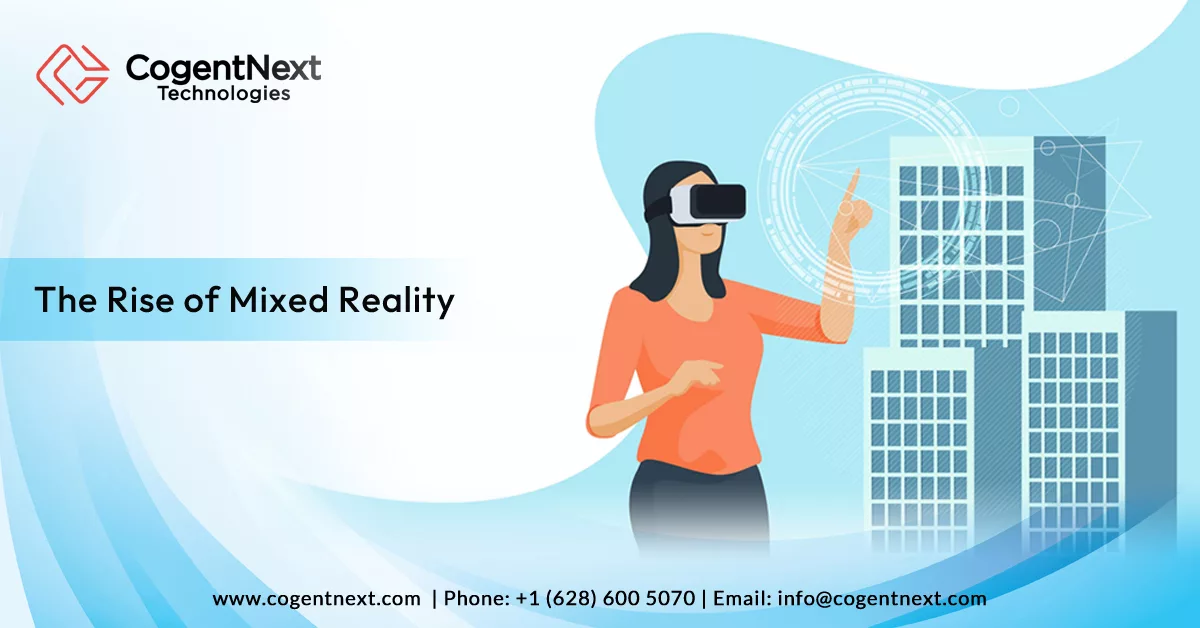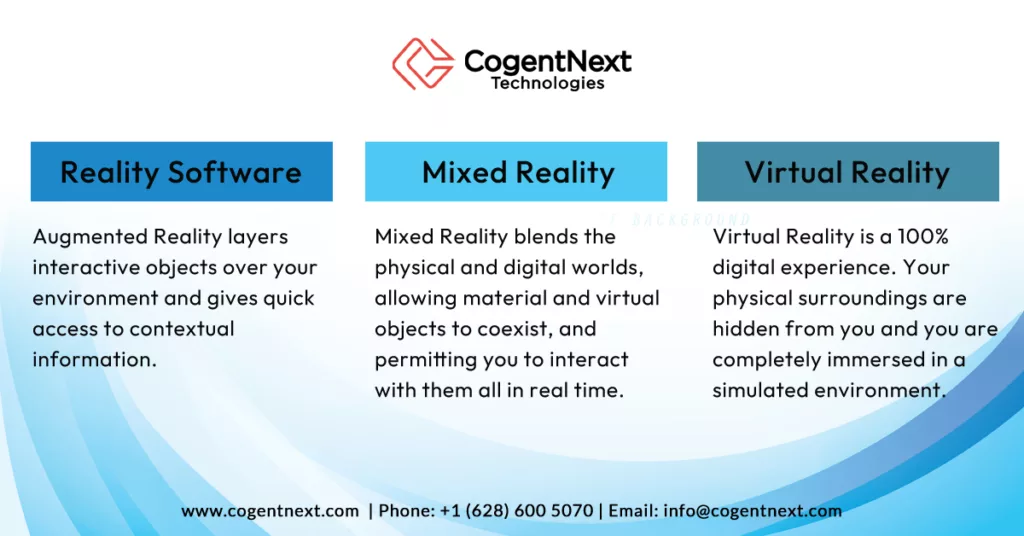
The Rise of Mixed Reality
With the large investments of capital that many corporations and investors are placing in mixed reality technologies, there are exciting prospects for the future, and yet quite a bit of controversy as to the prospective uses and ethics of this emerging space. In this article, we’ll explain the differences in terminology, possible applications for the technology, and more.
What is Mixed Reality?
According to Microsoft, “Mixed reality is the next wave in computing followed by mainframes, PCs, and smartphones.” The tech world has grand visions and high expectations, touting it as a new revolution in the way we use technology.
There are “cousins” related to Mixed Reality – Virtual Reality (VR) and Augmented Reality (AR). What is the difference between them?
Think of them together in a line between the real world and a completely digital one.
To illustrate, imagine you’re going to the grocery store. As you enter, if you’re using augmented reality, you might have a visual notification of your shopping list, and be able to check off items on the list as you put them in your cart. In addition, with mixed reality, one day you might enter and have all the products on your list stand out in brighter colors or with indicators above where they are located in the store to help you locate your favorite products more quickly. On the other hand, virtual reality would allow you to navigate through the store from the comfort of your chair at home, but ultimately, someone else would bring you the groceries you picked out.
How Does Mixed Reality Work?

A mixed-reality experience starts with a device, such as smart glasses, gloves, suits, or even simply your smartphone. These devices have advanced sensors and processors to process three-dimensional data. While capturing your surroundings, the device applies artificial intelligence to align digital content with your environment. Working in tandem with your personal computer or with a cloud-based service, tethered via cable or through WiFi, the system then allows you to interact both with virtual and physical objects, and the line between what is real and what is holographic fades into the background.
What Are Potential Applications?
Construction. Supervisors could remotely direct construction teams, dropping a virtual pin on the items to be given attention that day. Schematic diagrams would be available for instant review to guide them. Site maps could be traversed virtually, or building concepts can be shown in place before being built.
Manufacturing. Plant inspections could be carried out more efficiently, providing the inspector with real-time information that updates as he moves his gaze to other components. It could also alert machine operators in real time to problems with production and highlight the parts affected.
Training. Mixed reality systems are already providing an enhanced learning experience. For example, Japan Airlines is using Microsoft HoloLens to train flight crews. They even train mechanics by providing them with a fully-interactive virtual engine that they can disassemble and learn the names of parts and how they work together as a whole.
B2B Communication. Meeting participants could “sit” at the same table although joining from diverse locations worldwide. A product being analyzed and discussed could be placed in front of each attendee to interact with it and have context for the discussion. Translation could even be integrated into the experience, uniting diverse teams that don’t speak the same language.
Supply Chain Management. Viewing a pallet, a supply chain manager could verbally ask the system for more information on the shipment and instantly receive shipping history on his display.
There are countless other applications. How will we get to a point where MR becomes commonplace?
The Road Ahead for Mixed Reality
While the developments are promising, there are challenges ahead.
- Cost. The technology is so new, everything is being made from scratch at this point. Aside from the cost of hardware, creating software development kits to form the basis of future applications and hiring skilled developers to create rich experiences is not cheap.
- Spatial Mapping. Current techniques for superimposing content in space have a broader margin of error. Placing 3D objects accurately in the user’s surroundings in real-time will require more sophisticated mapping techniques.
- Complexity. MR requires, not just software engineers, but also data scientists, designers, and many other skilled professionals to fulfill all project requirements.
- A Long Game. Today’s startups rush to develop a minimum viable product (MVP) and rely on initial sales and enthusiasm to fund further development. Since with MR, there is no product to sell in the short term, this requires an early and large investment with the return years in the future, if at all.
- User Experience. Current personal hardware for MR is bulky, and users may chafe at the thought of wearing devices for hours at a time, or even a full day.
That doesn’t mean it’s doomed, however. Computer vision and image recognition technologies have advanced greatly in recent years. Big data, cloud computing, and advances in AI are making mixed reality an attainable goal.
Expert predictions are showing MR as an industry growing into the billions by next year. Gaming, while perhaps an initial driver of innovation, will take a back seat to enterprise MR, as large corporations leverage the technology to make operations more efficient.
One thing is for sure: MR isn’t going away. With big names like Meta, Apple, Microsoft, and many others competing for a piece of this new field, the coming years will reveal just how far we can digitally extend the world around us.
Contact us today at CogentNext and we can help you determine the right path for your organization’s digital transformation.
By Chandra Subramanian, CogentNext Technologies
